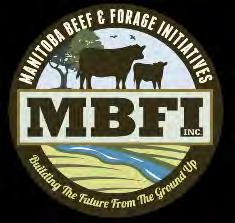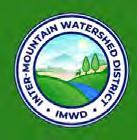






The Livestock Predation Prevention Program supports adoption of non-lethal, on-farm measures that reduce the risk of livestock predation by wolves, coyotes, bears and other predators. Reducing livestock predation promotes the co-existence of wildlife and livestock in agricultural regions of Manitoba.
Livestock producers who have both:
• A paid livestock predation claim under the Manitoba Wildlife Damage Compensation Program in 2021 or later.
• A Manitoba Premises Identification Number.
Eligible expenses include purchasing equipment, livestock guardian dogs, and constructing predator resistant fencing to deter attacks on livestock by coyotes, wolves, and other predators. The objective of a project must be to deter predation of livestock located on Manitoba farms. More details of eligible expenses can be found in the program guide.
Cap
The Pre-approved Livestock Predation Equipment and Guardian Dog funding stream is a rebate program. It allows eligible applicants to purchase items from a pre-approved list and submit the required documents to receive reimbursement.
Eligible producers can apply for funding to support construction of fencing that deters predators from entering calving and lambing areas, pastures, extended grazing areas, and deadstock compost sites. Producers will receive a funding decision letter indicating the approved budget for eligible projects.
June 14, 2024: Deadline for fence construction applications.
October 31, 2024: Complete fence construction. November 29, 2024: Complete fence inspection.
December 20, 2024: Deadline for submitting claims and proof of payment for equipment and guardian dog purchases and completed fence projects.
Eligible applicants can be reimbursed for up to 75 per cent of total approved eligible expenses, to a maximum of:
• $5,000 for purchases of pre-approved equipment and guardian dogs.
• $10,000 for fence construction projects
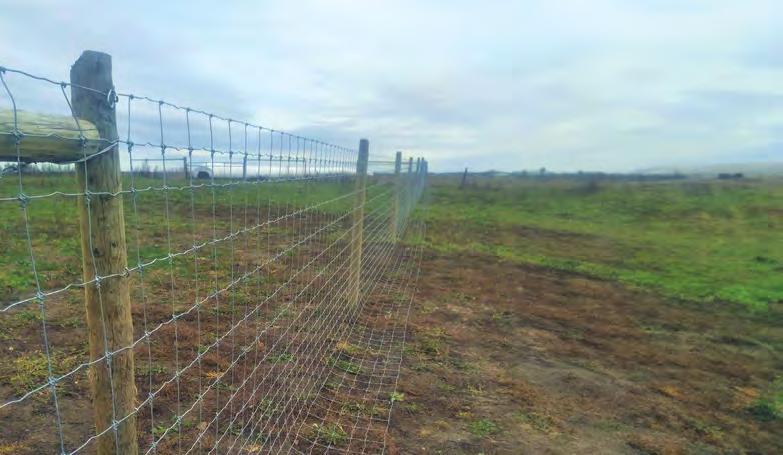
These maximums are the total funding available per applicant. Maximums also apply to individual categories of purchases and fence construction projects.
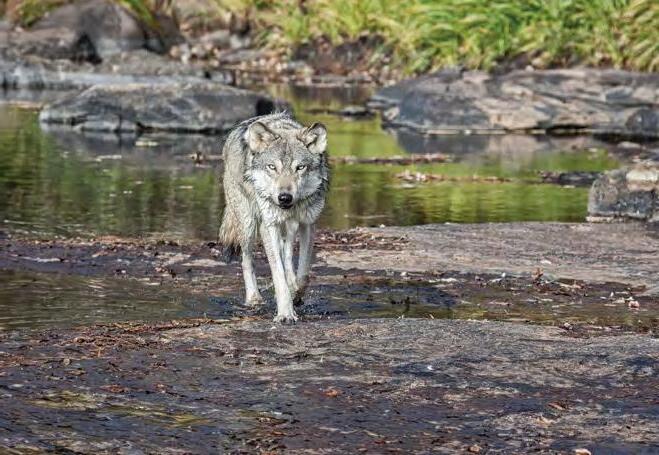
Producers submit a rebate claim for purchases from a list of pre-approved equipment and livestock guardian dogs that deter predators from their livestock. No prior approval is required. Claims are processed up to the claim deadline or until funding is exhausted.
Eligible applicants can be reimbursed for up to 75 per cent of total approved eligible expenses, to a maximum of $5,000 for all eligible equipment and livestock guardian dog purchases. Each category of eligible purchase has its own funding cap.
Solar foxlights create an unusual frequency and colour of light to mimic human presence and deter predators from entering a livestock area. They are best used during high-risk periods as their effect can wear off as predators become used to them.
Electronet is a wire netting fence that is electrified and can be used as temporary fence to deter predators from sheep or other small livestock. Netting and ground rods are eligible purchases. One energizer is also eligible when electronet is purchased.
Fladry is a line of brightly coloured flags that can be hung in front of a fence or other barrier to deter predators due to the novelty of the installation. Turbo fladry has the added feature of being electrified and further deterring predators. They are used temporarily in high-risk periods as the effect will wear off. Fladry, turbo fladry, temporary posts and insulators are eligible. One energizer and ground rods are eligible when combined with the purchase of turbo fladry.
Livestock guardian dogs are breeds of dogs that will deter predators from cattle, sheep, and other livestock. Eligible breeds include Akbash, Anatolian Shepherd, Central Asian Shepherd, Great Pyrenees, Kangal, Komondor, Kuvasz, Maremma, Sarplaninac, and Tatra. One spike collar can be claimed per dog.
Based on the 75% government cost-share, the $5,000 total funding cap is reached with total eligible purchases of $6,666.66. The caps for each category are reached with eligible purchases of $1,333.33 for solar fox lights and $4,666.66 each for electronet, fladry/turbo fladry and livestock guardian dogs.
· Purchase cost including shipping and PST
· Purchasing an energizer when electronet or turbo fladry is also purchased. Two energizers are eligible if both electronet and turbo fladry are purchased.
All invoices must be dated on or after April 1, 2024.
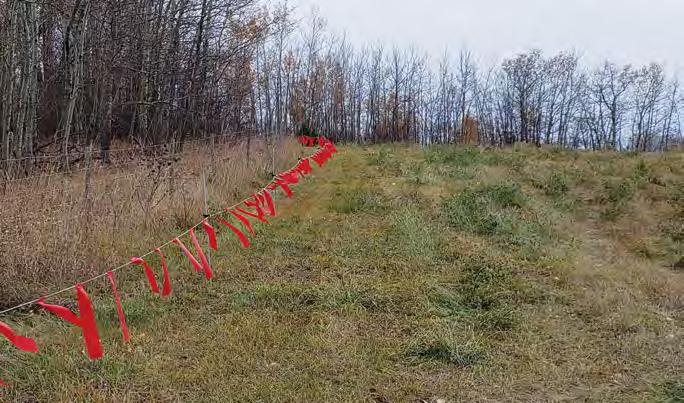
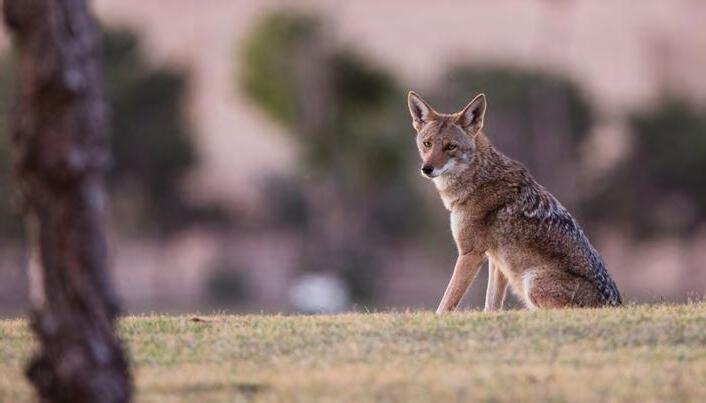
Financial assistance is available for construction of fences that reduce the risk of livestock predation:
Eligible applicants can be reimbursed for up to 75 per cent of total approved eligible expenses, to a maximum of $10,000 for all fence construction. Funding approved for each fence construction project is based on the size, type and purpose of the fence.
Project Type
Predator Resistant Fence
Deadstock Compost Pen
Fence Type
Wire-net fence (e.g. page, welded, fixedknot, or hinge-joint fencing)
· 152 cm (60”) high
· 178 cm (70”) high
Electrified, high tensile, no apron
· 7-wire
· 9-wire
· 11-wire
If an apron is added to prevent burrowing under a fence.
Project Cap (base + additional cost per linear foot of fence)
· $1,000 + $6/linear foot
· $1,000 + $7/linear foot
· $1,000 + $3 per linear foot
· $1,000 + $4 per linear foot
· $1,000 + $5 per linear foot
· $1/linear foot is added
For each of the above fence types, the base funding is $2,000 (instead of $1,000). The per linear foot rates are the same as for Predator Resistance Fence.
Note: Based on 75% government cost share, the $10,000 total funding cap is reached with eligible expenses of $13,333.33 or more. Depending on fence size and type, the approved funding may be less than the $10,000 fence category cap.
· Incremental Personal Labour at $30/hour and Incremental Personal Equipment Use at fixed, program rates. For these two incremental expenses combined, applicants can claim up to a total of $3.00/linear foot for deadstock compost areas, $1.00/linear foot for predator resistant fences or $1.50/linear foot if the predator resistant fence has an apron.
· Subcontracted Services related to custom labour and custom equipment use
· Equipment Rental for completion of the project
· Materials and Supplies such as gates, lumber, wire, and energizer (0.7 joules or more.)
· Provincial Sales Tax (PST).
Further conditions for a fence project:
· Fences are inspected to verify work completed and that they will deter predators.
· Specific ineligible items include barbed wire fences, hard-wired power sourcing, temporary or mobile fences, infrastructure and land preparation inside the fence, and fences around feedlots, feed storage areas, and non-grazed crops.

Fences constructed to contain cattle, sheep and other livestock are often ineffective barriers to predators. To be effective, fences must be constructed to deter predators from climbing over, passing through, or burrowing under them. All fence projects are inspected to verify that the work has been completed and the fence will deter predators. See the Program Guide and the Sustainable CAP website for fence
standards as well as guidelines and examples for fence construction.
An inspection of the finished fence can be arranged by calling the Program Information Line at 1-800-811-4411 or emailing agriculture@gov.mb.ca
The applicant will then be contacted by an inspector from their local MASC Service Centre. The completed inspection report will be submitted by MASC on the applicant’s behalf.
The application and claim documents for equipment, guardian dogs, and fence construction can be found on the Manitoba Agriculture website:
· Applicant Information Form to be completed once. It covers both pre-approved equipment and guardian dogs and fence construction
· Rebate Worksheet for pre-approved equipment and guardian dogs
· Application Worksheet for fence construction
Go to www.manitoba.ca/scap/ and click on Resiliency and Public Trust and then on Livestock Predation Prevention to find these forms as well as the Program Guide.
The applicant must attach all invoices and proof of payment, along with the Rebate Worksheet for equipment and guardian dogs and the Claim Worksheet for fence construction projects.
An applicant can submit one Rebate Worksheet and one Fence Claim Worksheet over the life of the program. The documents can be emailed to: agriculture@gov.mb.ca.
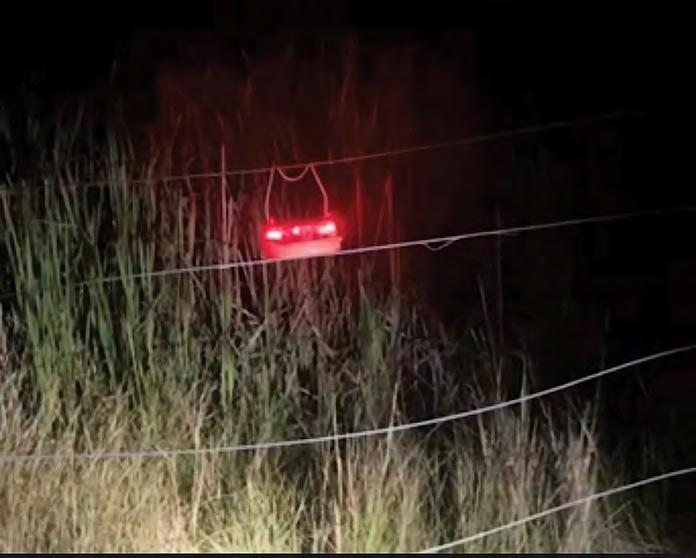
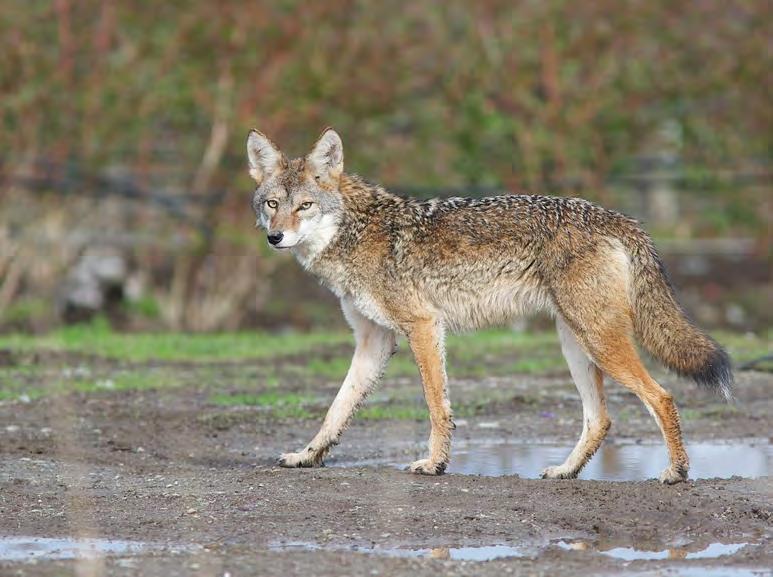

Updated June 4, 2024
Phone: (403) 275-8558 Phone: (613) 233-9375
Email: contact@cattle.ca
Highly Pathogenic Avian Influenza (HPAI) in Dairy Cattle
Key Points
• USDA has now confirmed 69 herds positive with HPAI in the US. To date there remains no reported cases in Canada. Michigan is still the “hotspot” with 5 of the last 10 positive cases and the last 2 human cases. Updated USDA information is still available on the APHIS website at: https://www.aphis.usda.gov/livestock-poultry-disease/avian/avianinfluenza/hpai-detections/livestock
• The CDC confirmed a third positive human case from a farm worker in Michigan. In addition to conjunctivitis this individual also had general respiratory signs such as a cough and a sore throat. This case was still characterized as mild, and the person recovered after treatment with antiviral medication. The CDC press release and resources are available here: https://www.cdc.gov/media/releases/2024/p0530-h5-human-case-michigan.html
• Furthermore, the USDA has also confirmed positive alpacas with the same strain affecting the cattle (B3.13). The Alpacas were on a property with poultry that were depopulated due to HPAI. No other details about the symptoms exhibited by the Alpacas were made available. Information regarding the alpacas can be found here: https://www.aphis.usda.gov/livestock-poultry-disease/avian/avian-influenza/hpaidetections/mammals/highly-pathogenic-avian
• CFIA completed their testing of 303 retail milk samples from across Canada. All samples have tested negative. https://inspection.canada.ca/animal-health/terrestrialanimals/diseases/reportable/avian-influenza/latest-bird-flu-situation/commercial-milksampling-and-testing-for-hpai-vira/eng/1715705614103/1715705707609
• USDA’s Food Safety and Inspection Service (FSIS) has tested 109 samples of beef muscles of cull dairy cows condemned at select FSIS-inspected slaughter facilities. No viral particles were detected in 108 out of 109 muscle samples. Viral particles were detected in tissue samples, including diaphragm muscle, from one cow. No meat from these dairy cattle entered the food supply. Updates on H5N1 Beef Safety Studies | Animal and Plant Health Inspection Service (usda.gov)
• USDA has dedicated $98 million to provide support to affected US dairy farms. Other actions the US has taken: implementation of the Federal Order to limit spread of the disease, coordinating with federal partners to share expertise and lab capacity, working with producers to practice good biosecurity measures, continuing to conduct investigations to determine how the virus is spread within and between farms, and analyzing and sharing sequences alongside validated epidemiological information. USDA, HHS Announce New Actions to Reduce Impact and Spread of H5N1 | USDA

Phone: (403) 275-8558 Phone: (613) 233-9375
Email: contact@cattle.ca
Producers can help protect stock and people and prevent the spread of disease by enhancing biosecurity. *Note that no mortality has been associated with HPAI in cattle.
• Monitor cattle for clinical signs.
• Report any unusual clinical signs or changes in illness or mortality* rates to veterinarians.
• Minimize contact between cattle and migratory wild birds when feasible. Report dead birds to the Canadian Wildlife Health Cooperative.
• Wear farm-specific boots and clothing.
• Limit non-production animal access to farm areas and implement measures to exclude domestic pets (i.e. cats) and wildlife from buildings housing cattle.
• Avoid feeding unpasteurized colostrum or milk to calves.
• Practice biosecurity between caring for ill stock and other animals on the operation. Wear personal-protective equipment when caring for sick animals.
• Limit visitors.
Additional Resources
Notice to industry: Highly pathogenic avian influenza (HPAI or H5N1) in dairy cattle in the USA –Addendum to export certificate https://inspection.canada.ca/eng/1715705614103/1715705707609
H5N1 Bird Flu: Current Situation Summary | Avian Influenza (Flu) (cdc.gov)
Questions and Answers Regarding Milk Safety During Highly Pathogenic Avian Influenza (HPAI) Outbreaks | FDA
Updates on H5N1 Beef Safety Studies l USDA
High Pathogenicity Avian Influenza in Cattle (woah.org)
Livestock Marketing Association (lmaweb.com)
Highly pathogenic avian influenza in cattle: Guidance for private veterinarians - Canadian Food Inspection Agency
Highly pathogenic avian (HPAI) in livestock
(June 7, 2024 Agriculture and Agri-Food Canada News Release) The Canadian cattle industry is one of the country’s largest industries and a major economic driver. Canadian cattle and dairy producers hold themselves to the highest standards for quality and sustainability, which is why their genetics continue to be sought-after around the world.
Today, the Honourable Lawrence MacAulay, Minister of Agriculture and Agri-Food, announced up to $1,627,270 to the Canadian Angus Association (CAA), through the AgriScience Program – Projects Component, to help improve genetic evaluation tools for Canadian beef and dairy cattle.
Genetic selection tools allow producers to increase their return on investment, while accurately predicting traits that benefit the environment and respond to consumer preferences. With the development of these tools, the challenge of collecting large volumes of data and managing the complexity of the collected data has increased.
With this federal support, the CAA will leverage cutting-edge technologies such as artificial intelligence, machine learning, camera and computer vision systems to capture large volumes of accurate data on traits that impact producer profitability, animal health and welfare, and environmental sustainability. This research work will provide beef and dairy producers with valuable knowledge on genetic selection and support the development of new systems and technologies to further advance breeding tools. These advancements in genetic evaluation tools will further position Canada as a well-renowned country for genetics within the global cattle industry.
Investing in innovation to advance efficient and sustainable genetic traits in Canadian cattle will help maintain the quality of herds, while supporting a more productive and profitable industry for the future.
Quotes
"Canada’s world-class cattle industry contributes significantly to our country’s economy. By investing in new innovations and technologies, we can enhance the industry’s economic and environmental sustainability – putting more money in the pockets of producers, and more top-quality Canadian products on tables around the world."
- The Honourable Lawrence MacAulay, Minister of Agriculture and Agri-Food
“The Canadian Angus Association exists to preserve and expand the breed for Canadian cattle producers and beef consumers, doing so in part by leading research and development projects. We are very grateful to Agriculture and Agri-Food Canada for supporting our project through the Sustainable Canadian Agricultural Partnership. Through this project, and in partnership with Holstein Canada, our goal is to leverage cutting-edge camera and artificial intelligence (AI) technology to develop new ways to measure traits for Angus and Holstein cattle. These traits impact producer profitability, animal health and welfare, and carcass quality.”
- Myles Immerkar, CEO, Canadian Angus Association
Quick facts
• As of January 1, 2024, the Canadian herd totaled 11.1 million cattle and calves (including both beef and dairy), on 70,490 Canadian farms and ranches.
• In 2023, farm cash receipts from the sale of Canadian cattle and calves totaled $15 billion, in addition to the $8.6 billion generated from milk and cream sold from dairy farms, all while supporting hundreds of thousands of jobs directly and indirectly.
• The AgriScience Program, under the Sustainable Canadian Agricultural Partnership, aims to accelerate innovation by providing funding and support for precommercial science activities and research that benefits the agriculture and agri-food sector, and Canadians
• The AgriScience Program – Projects Component is currently accepting applications.
• The Canadian Aberdeen Angus Association, operating as the Canadian Angus Association (CAA), is a not-for-profit association incorporated under the Animal Pedigree Act and represents members from across Canada for the purposes of registering and recording the pedigrees of purebred Angus cattle and promoting the breed across Canada.
• AgriScience Program – Projects / Canadian Angus Assoc
(June 5, 2024 Environment and Climate Change Canada News Release) Clean air is crucial to our daily health and wellbeing. While Canadians generally benefit from good air quality, seasonal increases in air pollutants, including smog and wildfire smoke, can significantly impact air quality conditions. Last year, Canada experienced its worst season of wildfire events on record, which impacted Canada’s air quality and increased health risks, especially for people with underlying health conditions.
In response to public feedback during last year’s wildfire events, Environment and Climate Change Canada launched improvements to its air quality forecast and alert system. A new Air Quality Advisory with a red banner notification is now a feature on weather.gc.ca and the WeatherCan application. The Air Quality Advisory is issued to notify the public when the Air Quality Health Index (AQHI) is above 10 for three or more hours during wildfire smoke events. This alert represents very high-risk levels, which are typically only experienced due to smoke from wildfire events, and will provide a clear visual cue to Canadians about the severity of the air quality. In addition, when wildfire smoke is greatly reducing air quality, the AQHI is calculated and reported hourly using only fine particulate matter (PM2.5), which is the dominant pollutant in wildfire smoke.
The AQHI is a scale used to help people understand what the quality of the air around them means for their health. Canadians can consult the AQHI to make informed decisions on how to protect themselves and loved ones from poor air quality. Prior to the implementation of the Air Quality Advisory, a Special Air Quality Statement was the only alert when the AQHI was seven or higher. The addition of the new
advisory, which alerts Canadians when the AQHI exceeds a rating of 10 for three or more hours during wildfire smoke events, creates a twotiered alerting system. Both alerts contain updated health messaging developed in collaboration with Health Canada.
In late July, Environment and Climate Change Canada will also be launching four new air quality forecast maps on its Wildfire Smoke Prediction System web page (FireWork). One will show smoke from forest and vegetation wildfires. The others will show total PM2.5, ozone, and nitrogen dioxide from wildfires. All maps will show how the pollutants are expected to move across Canada and North America. The online redesign will be more user friendly, allowing the public to easily access information on the predicted movement of key air pollutants. The new maps will also provide better colour distinction and gradation, improving their visual accessibility.
• In 2023, during wildfire season, Canada had twice as many days with poor air quality compared to 2021 and eleven times as many days with poor air quality compared to 2020.
• The AQHI is calculated based on the relative risks of a combination of common air pollutants that are known to harm human health. The pollutants used to calculate a rolling three-hour average and reported hourly are ground-level ozone (O3), particulate matter (PM2.5/PM10), and nitrogen dioxide (NO2).
• The AQHI is also generated using fire weather and vegetation information from Natural Resources Canada.
continued on page 11
• The WeatherCan application can be set up to send notifications when the AQHI reaches three and higher.
• Special Air Quality Statements will continue to be issued when the AQHI reaches seven to 10.
Related products
• Air Quality Health Index
• Wildfire smoke, air quality and your health: Overview
• WeatherCAN
Manitoba Beef Producers (MBP) is accepting applications until Friday, December 13, 2024 for consideration for the local awarding of The Environmental Stewardship Award (TESA).
Since 1996, TESA has recognized producers who go above and beyond standard industry conservation practices and set positive examples for other cattle producers and the general public. As stewards of a vast portion of the Canadian landscape, Canada’s beef cattle producers play a significant role in protecting and enhancing the environment. They continuously strive to improve existing stewardship conservation practices to create a sustainable future – always farming for tomorrow.
At the local level, a producer receives provincial recognition for their outstanding environmental contributions. In Manitoba, this occurs in conjunction with MBP’s annual general meeting in February. All provincial award recipients then move forward to compete for national recognition from the Canadian Cattle Association (CCA). The national TESA recipient is announced during the CCA’s semi-annual
meeting held in August in conjunction with the Canadian Beef Industry Conference.
Each nominee exemplifies significant innovation and attention to a wide range of environmental stewardship aspects in their farm or ranch operation. Such innovations extend beneficially to areas far beyond their land, including water, wildlife and air.
How to Nominate
All beef cattle operations in Canada are eligible to apply for consideration for TESA. Interested producers can either nominate themselves, or be nominated by another individual or an organization. All methods are equally encouraged. More details and the application form can be found at: https://www.cattle.ca/sustainability/tesa
The completed application form, along with all supporting documentation (such as letters of support, photos and/or videos), is to be submitted to Manitoba Beef Producers by email to info@mbbeef.ca no later than Friday, December 13, 2024. If you have questions, please contact the MBP office at 204-772-4542.
(Source: Statistics Canada’s The Daily for June 5, 2024) The Farm Product Price Index (FPPI) declined 7.4% on a year-over-year basis in March, which marked the second consecutive monthly year-over-year decline. The losses in the crop index outweighed the gains in the livestock and animal products index.
Lower prices for grains and oilseeds continue to put downward pressure on the crops index
In March, the crop index dropped 16.7% compared with March 2023, marking the 15th consecutive month of year-over-year declines. The drop in the crops index was driven by decreases in the prices of grains and oilseeds.
The oilseeds index (-25.0%) continued its downward trend in March 2024 compared with the same month a year earlier, due to lower prices for canola (-26.3%), soybeans (-22.2%) and flaxseed (-16.8%). Ample global oilseed supply and weak global demand put downward pressure on prices. Canadian canola exports fell 34.0% in March compared with March 2023.
The grains index decreased 23.0% in March 2024 compared with the same month in 2023. The decline was primarily driven by lower prices for corn (-32.2%), wheat (excluding durum) (-24.9%) and barley (-24.8%). Prices for wheat and corn decreased due to continued pressure from large global supplies. Prices for barley fell on a year-over-year basis in March 2024, the result of declines in domestic and global demand for animal feed, with Canadian exports for barley dropping 28.0%.
Meanwhile, the specialty crops monthly price index rose 5.7% on a year-over-year basis in March 2024, mainly on higher prices for lentils (+13.2%) and dry peas (+3.2%).
Increases in the price indexes for fresh potatoes (+5.4%), fresh fruits (+4.4%) and fresh
vegetables (+3.7%) also mitigated the year-overyear decline in the total crops index in March.
Increased cattle exports and the shrinking cattle herd contribute to the increase in the cattle and calves index
The livestock and animal products monthly price index increased 6.9% in March compared with the same month a year earlier, which was the sixth consecutive month with year-over-year gains.
The cattle and calves index recorded the largest monthly year-over-year increase among all FPPI components, up 17.3% in March. The primary contributor to the increase in the cattle and calves index was the declining cattle herd. Elevated feed costs continued to incentivize herd liquidation. Furthermore, the value of cattle exported for immediate slaughter increased 35.4% in the first quarter of 2024 compared with the first quarter of 2023, while the quantity of cattle exported for immediate slaughter increased 10.8%.
The monthly hog price index increased 2.4% year over year in March 2024. Hog prices benefited from price competitiveness compared with other meats as food inflation incentivized consumers towards less expensive options. Canadian pork exports increased in the first quarter of 2024 compared with the same quarter of 2023.
The poultry (-2.6%) and dairy (-2.3%) indexes both reported declines, while the egg index (+0.1%) was near flat year over year in March 2024.
To see the accompanying tables, go to: https://www150.statcan.gc.ca/n1/dailyquotidien/240605/dq240605deng.htm?utm_source=mstatcan&utm_medium=eml &utm_campaign=statcan-statcan-mstatcan
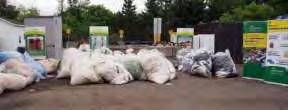
Once used, farmers prepare materials for recycling and drop them off at Cleanfarms collection sites as part of the process of expanding sustainable management solutions for agricultural waste. (Image courtesy of Cleanfarms)
(May 30, 2024 news release) Cleanfarms has posted its 2023 annual report, highlighting the new strategic direction of Cleanfarms for Canadian farmers to manage agricultural plastic products and packaging through recycling and safe disposal.
This year’s report sheds light on the partnerships and industry collaboration that provide opportunities for farmers and producers to be even more sustainable. Beyond the wellestablished collection system for pesticide and fertilizer containers and seed bags, new Extended Producer Responsibility Programs (EPR) began in Quebec and Prince Edward Island.
New EPR programs in Quebec targeted materials including maple tubing, feed bags, peat moss and animal bedding bags, twine and plastic films for silage and hay. In Prince Edward Island, new programs targeted silage wrap, twine and fertilizer bags.
“The important EPR updates in Quebec and PEI are an indication of the need for more sustainable solutions for agricultural suppliers and Canadian farmers, who care about doing the right thing with their ag waste,” said Cleanfarms Executive Director, Barry Friesen. “We’re proud to be able to provide those solutions and will continue expanding our
programs to meet the needs of the industry and the individuals in it.”
“As new programs roll out, we are committed to continue working together with the entire ag value chain to ensure the programs are as cost effective, efficient, and accessible for farmers as possible,” Friesen explained. “The vision that was established by Cleanfarms board members in 2023 provides guidance with a solid plan to build conditions for success and help develop a circular economy in agriculture over the years to come.”
A circular economy for agricultural plastics is another driver for Cleanfarms operations, with a goal to ensure that plastics collected through Cleanfarms operations can be recycled into new, useful products on Canadian farms, rather than ending up in landfills or the environment.
“In 2023, our recycling programs not only reduced what went to landfill, but we also prevented over 9 million kilograms of carbon dioxide equivalent emissions from entering the atmosphere. Through Cleanfarms programs, the entire agricultural industry can make a tangible contribution to sustainability– it all adds up,” said Friesen.
In the 2023 annual report, Cleanfarms highlighted the total collection volumes of agricultural materials since the inception of the programs (rounded):
• Plastic pesticide and fertilizer containers 23L and smaller – 56.3 million kg
• Non-refillable bulk pesticide and fertilizer drums and totes – 482,000 units
• Seed and pesticide bags – 3.82 million kg
continued on page 14
• Unwanted old pesticides – 4.53 million kg
• Old, obsolete livestock/equine medications – 74,500 kg
• Grain bags, agricultural film and baler twine plastic – 16.9 million kg
• Maple tubing (in Quebec only) –914,000 kg
Cleanfarms collects ag waste materials through valued partnerships with more than 1,500 recycling collection sites across Canada.
Cleanfarms is an agricultural industry stewardship organization that contributes to a healthier environment and a sustainable future by recovering and recycling agricultural and related industry plastics, packaging and products. It is funded by its members in the crop protection, seed, fertilizer, animal health medication, peat moss, animal bedding, feed, ag plastics, and maple tubing industries. It has staff located in Lethbridge, Alberta; Moose Jaw, Saskatchewan; Winnipeg, Manitoba; Etobicoke, Ontario; and St-Bruno, Quebec.
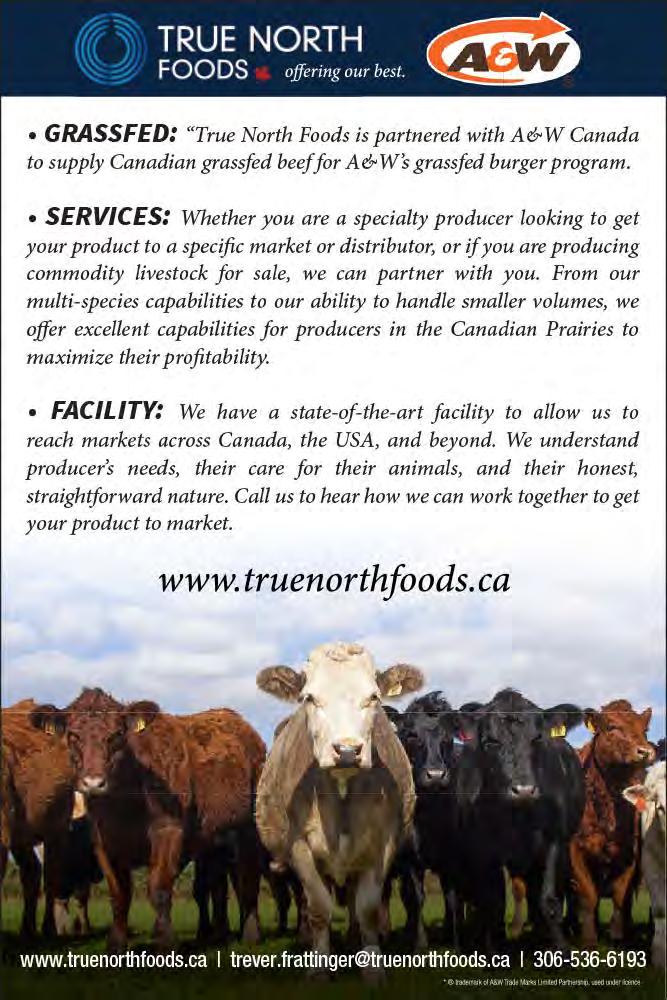


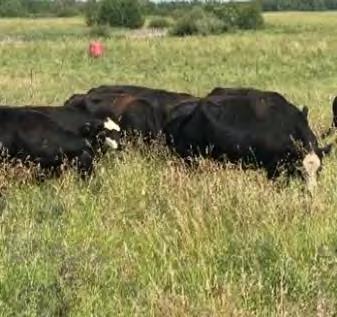
Manitoba Agriculture invites you to join us for a pasture tour in northwest Manitoba featuring multiple aspects of summer pasturing systems, including grazing planning, using annuals, livestock predation prevention and more!
Date: Wednesday, July 3, 2024
Time: 9:00 a.m. to 6:00 p.m.
Place: Dauphin Recreation Complex –200 1st St SE Dauphin, MB
Registration: $40 (includes bus transport, lunch, and supper) payable to Inter-Mountain Watershed District PRE-REGISTRATION REQUIRED by Friday, June 28, 2024
8:00 a.m. Sign in at the Dauphin Recreation Complex Parking Lot – East Side of Building
9:00 a.m. Buses depart at 9:00 a.m. sharp
9:30 a.m. Myhre Land and Cattle – Extended Grazing with Corn
Hans and Mary Myhre – Dauphin
Brett Graham – Corn Agronomy – Syngenta Canada
11:00 a.m. Grazing Planning and Managing Livestock Access to Riparian Areas
Martin and Corrine, Billy and Haley DeVos – Fork River
Jessa McNabb – Intermountain Watershed District – PWCP Programming
Mary-Jane Orr – MBFI Grazing Mentorship Program, and Ron Moss – Grazing Consultant
12:30 p.m. Lunch on Bus
1:00 p.m. Benefits of Increasing Plant Diversity through Cover Crops
Robin and Carol Sime – Fork River
Dakota Odgers - Covers and Co.
2:30 p.m.
4:00 p.m.
Moose Mountain Bison Ranch Focusing on Sustainable Production
Tom Olson – Owner and Operator – Pine River
Tyson Gillis, Manitoba Crown Lands - Manitoba Agriculture
Manitoba Beef Producers Livestock Predation Prevention Project – Deadstock Composting Pen
Eugene and Doreen Burdeny – Ethelbert
Elizabeth Nernberg, Manitoba Agriculture
5:00 p.m. Manitoba Agricultural Services Corporation - Forage and Livestock Insurance Programming
Rachel Jensen MASC Insurance Agent - Dauphin
6:00 p.m. Supper at Smitty’s Restaurant – 1601 Main St South Dauphin
For more information and to register contact: Pam Iwanchysko, Livestock and Forage Extension Specialist, Manitoba Agriculture at pamela.iwanchysko@gov.mb.ca or call (204) 648-3965
